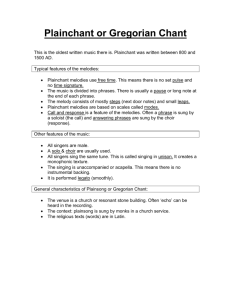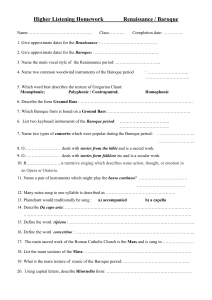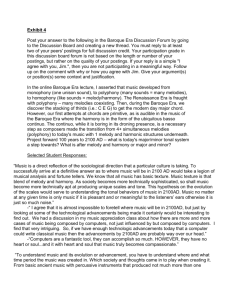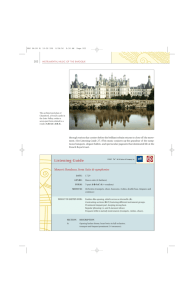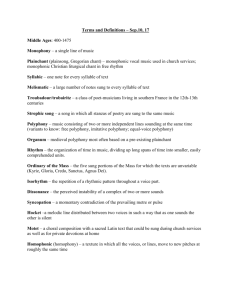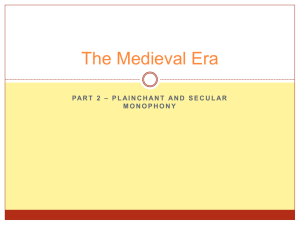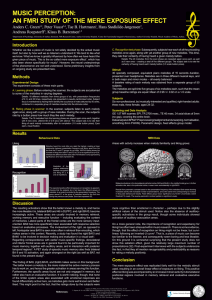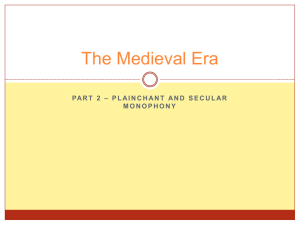The Middle Ages Chants Singing- a way of uttering words that sets
advertisement
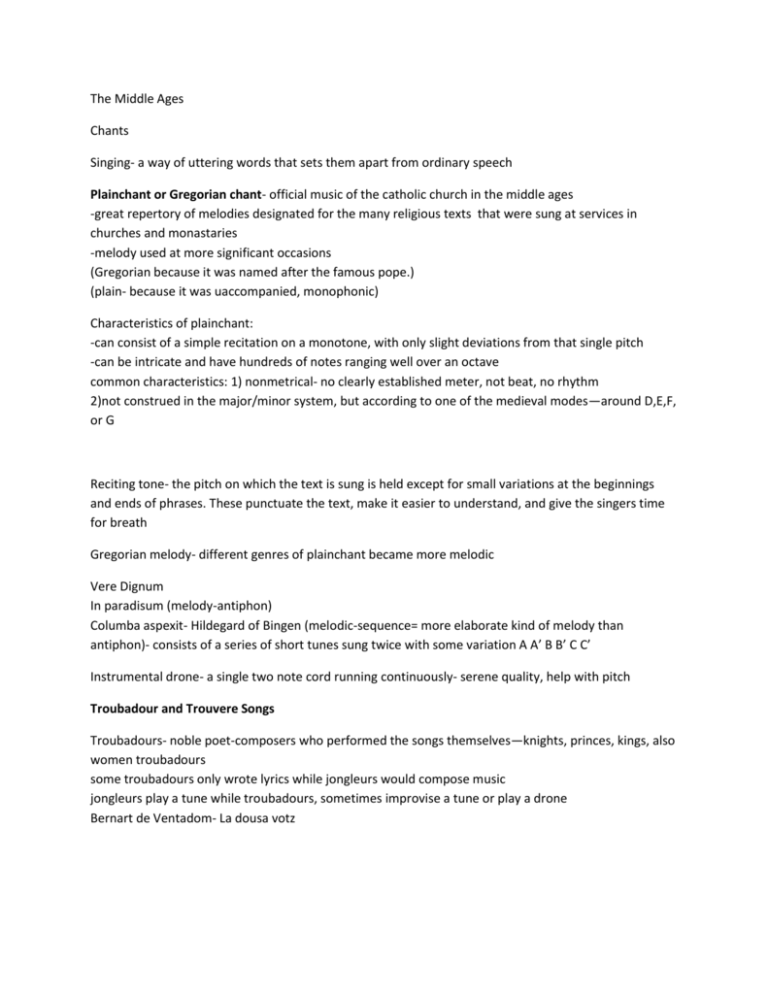
The Middle Ages Chants Singing- a way of uttering words that sets them apart from ordinary speech Plainchant or Gregorian chant- official music of the catholic church in the middle ages -great repertory of melodies designated for the many religious texts that were sung at services in churches and monastaries -melody used at more significant occasions (Gregorian because it was named after the famous pope.) (plain- because it was uaccompanied, monophonic) Characteristics of plainchant: -can consist of a simple recitation on a monotone, with only slight deviations from that single pitch -can be intricate and have hundreds of notes ranging well over an octave common characteristics: 1) nonmetrical- no clearly established meter, not beat, no rhythm 2)not construed in the major/minor system, but according to one of the medieval modes—around D,E,F, or G Reciting tone- the pitch on which the text is sung is held except for small variations at the beginnings and ends of phrases. These punctuate the text, make it easier to understand, and give the singers time for breath Gregorian melody- different genres of plainchant became more melodic Vere Dignum In paradisum (melody-antiphon) Columba aspexit- Hildegard of Bingen (melodic-sequence= more elaborate kind of melody than antiphon)- consists of a series of short tunes sung twice with some variation A A’ B B’ C C’ Instrumental drone- a single two note cord running continuously- serene quality, help with pitch Troubadour and Trouvere Songs Troubadours- noble poet-composers who performed the songs themselves—knights, princes, kings, also women troubadours some troubadours only wrote lyrics while jongleurs would compose music jongleurs play a tune while troubadours, sometimes improvise a tune or play a drone Bernart de Ventadom- La dousa votz estampie- they are unassuming one-line pieces in which the same or similar musical phrase are repeated many times in varied form (instrumental dance)- triple meter, percussion instruments Early Polyphony- organum- a traditional plainchant melody to which a composer has added another melody in counterpart sung silmultaneously to the same words Later polyphony- motet- sacred vocal composition. Motet- upper lines given their own words, set to sacred text, and love poems Mauchaut’s (motet)- quant en moi- isorhythm- writing successive lengthy passages in identical rhythms but with distinct melodies Polyphony- simultaneous combination of two or more melodies Hocket- fast echoes between the two singers Renaissance-rebirth “paraphrased” – embellished chants with extra notes and set them in graceful rhythms and soothed out passages that struck them as awkward or antiquated, but still unpredicted harmonies if compared with baroque -sensitivity to sonority (sound quality) and melody was sign of renaissance Music as Expression1) accuate declamation made sure words were sung to rhythms and melodies that approximated normal speech, declamation- the way words are set to music 2)word painting- match music to the meaning of the words that were being set The Mass- most important church service chansons- polyphonic songs, no more isorhythm, simpler, gentler, suppler -large scale music- 5 section form Josquin- Mass, Kyrie Josquin- Mille Regrets- chanson Madrigal- short composition set to a one-stanza poem-typically a love poem, with rapid turnover of ideas and images -more homophony, words were more important Weelkes, "As Vesta was from Latmos Hill Descending – word painting- is the musical technique of writing music that reflects the literal meaning of a song. (English Madrigal) Instrumental Music- violins and harpsichords, lute instrumentalists would either play alng with singers in vocal music or else play motets, chansons, and othr genre by themselves without words. Renaissance Dances1) pavan-duple meter usually paired with 2) galliard- faster dance in triple meter less formal- saltarello, irish jig, bransle Anonymous- Daphne (Galliard) Early Baroque definite meter basso continuo- organ, harpsichord, cellos or bassoons- adds chords continuously to go with bass line— clarifying harmony and making the texture bind or jell. ground bass or basso ostinato- music constructed from bottom up baroque developed modern/major system Functional Harmony- one chord follows another in a predicitble and purposeful way. Way of organizing large scale pieces Gabrieli- O Magnum Mysterium- of a larger motet written for Christmas- early baroque Control and Extravagance Fugue- a composition written systematically in imitative polyphony, usually with a single main theme, the fugue subject Concerto/concerto grosso- soloist/soloists with orchestra in background solo/ritornello form Bach- Air- dance form, walking bass (cello and bass viols), strings and continuo play Handel- hallelujah chorus- from Oratorio called Messiah, not staged, sacred- on birth of Christ
